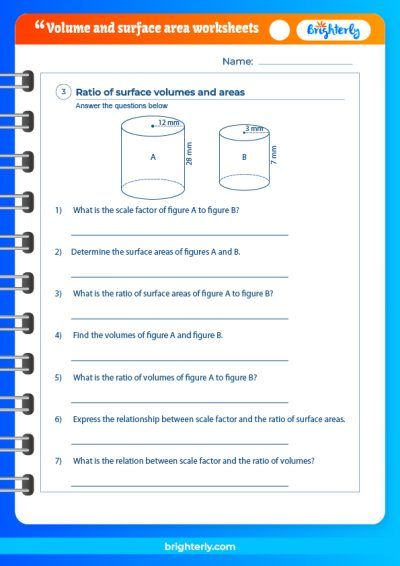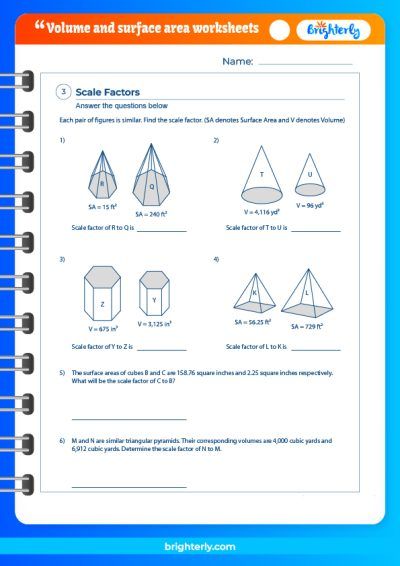Surface Area – Formula, Definition With Examples
Updated on January 12, 2024
Surface area is a key concept in mathematics, particularly in geometry. It refers to the total area that the surface of a three-dimensional object covers. This measurement is crucial in various fields, such as architecture, engineering, and science. Understanding surface area helps in calculating the amount of material needed to cover a 3D object and in understanding the object’s properties.
For instance, consider a box. The surface area of this box is the sum of the areas of all six faces. To compute it, you measure each face and add these measurements together. This basic principle applies to more complex shapes as well, such as spheres, cylinders, and pyramids. Each shape has its unique formula for calculating its surface area, which is derived from its geometric properties.
Formulas for Surface Area
Different 3D shapes have distinct formulas for calculating their surface areas. For example, the surface area of a cube is calculated using the formula: Surface Area of a Cube=6×side². This formula arises because a cube has six identical square faces, and the area of each square is the side length squared.
Another example is the sphere. The formula for a sphere’s surface area is Surface Area of a Sphere=4×radius². This formula is derived from the properties of a sphere, where every point on the surface is equidistant from the center.
Table Formulas for Surface Area
|
|
|---|---|
|
|
|
|
|
|
|
|
|
|
|
|
|
|
|
|
|
|
Types of Surface Areas
Surface areas can be categorized based on the shape of the object. Common types include:
- Curved Surface Area: This is the area of the curved surface in shapes like cylinders and cones. It doesn’t include the base or top surfaces.
- Lateral Surface Area: Refers to the area of the sides of an object, excluding its base and top. This is common in prisms and pyramids.
- Total Surface Area: This is the sum of all the areas covering the 3D object, including bases and sides.
Table Types of Surface Areas
|
|
|---|---|
|
|
|
|
|
|
Surface Area of Common Shapes
- Cube: A cube has six square faces of equal size. Its surface area is six times the area of one face.
- Sphere: A sphere has a continuous curved surface. Its surface area is calculated using the radius.
- Cylinder: A cylinder’s surface area includes the areas of its two circular bases and the curved surface.
Examples of Calculating Surface Area
- Cube: For a cube with each side measuring 3 cm, the surface area is .
- Sphere: For a sphere with a radius of 4 cm, the surface area is .
Practice Questions on Surface Area
- Calculate the surface area of a cylinder with a radius of 5 cm and a height of 10 cm.
- Find the total surface area of a rectangular prism with dimensions 3 cm by 4 cm by 5 cm.
FAQs on Surface Area
What is Surface Area?
Surface area is the total area covered by the surface of a three-dimensional object.
Why is Surface Area Important?
It’s essential for determining the amount of material required to cover an object and for understanding its properties.
Can Surface Area Be the Same for Different Shapes?
Yes, different shapes can have the same surface area. For example, a cylinder and a prism can have the same surface area if their dimensions are such that the formulas yield the same result.
What is the Difference Between Surface Area and Volume?
Surface area measures the total area that covers an object’s surface, while volume measures the amount of space an object occupies.
Is Surface Area Always Measured in Square Units?
Yes, surface area is always expressed in square units, such as square meters, square centimeters, or square inches, depending on the size of the object.
How Does Changing the Size of an Object Affect its Surface Area?
Increasing the size of an object generally increases its surface area. However, the relationship is not always direct and depends on the shape and dimensions of the object.






